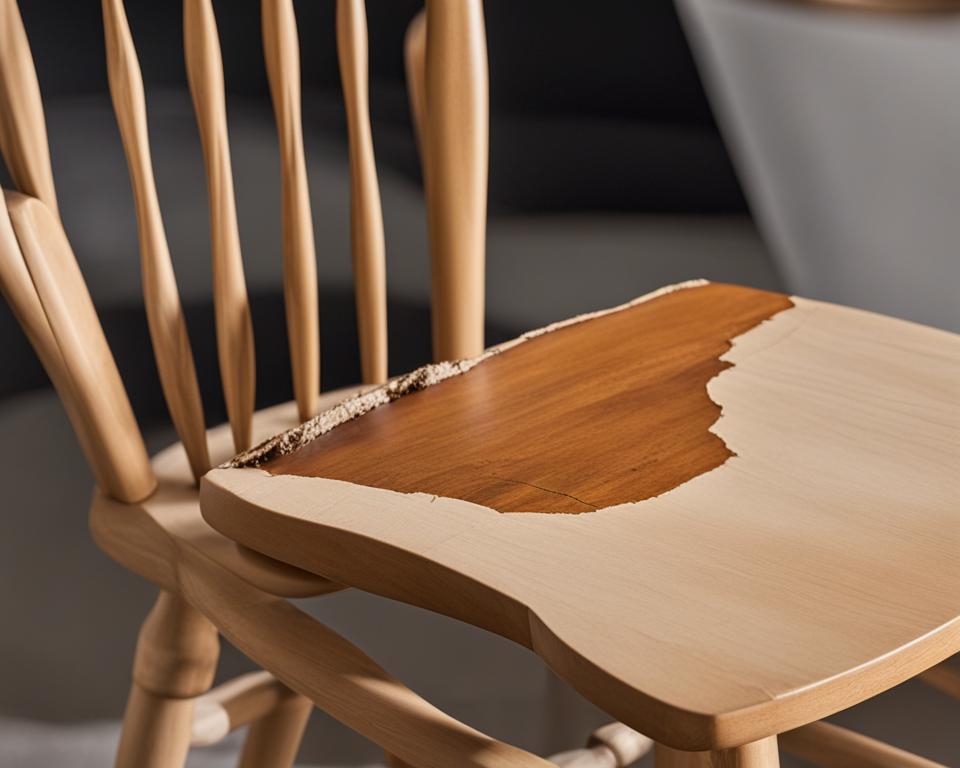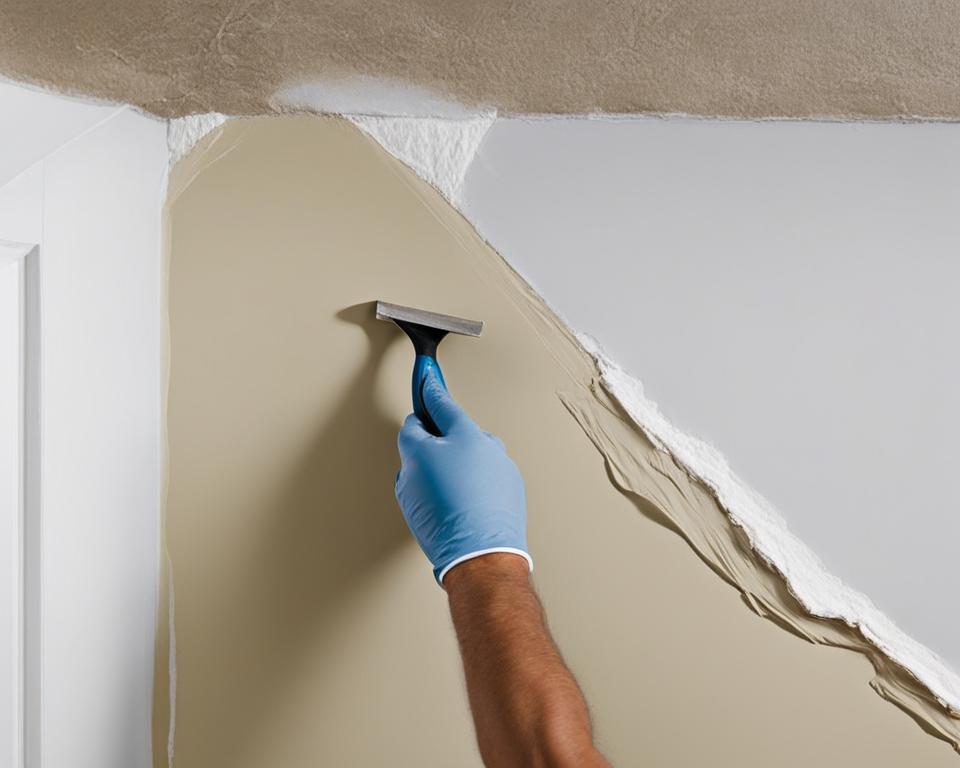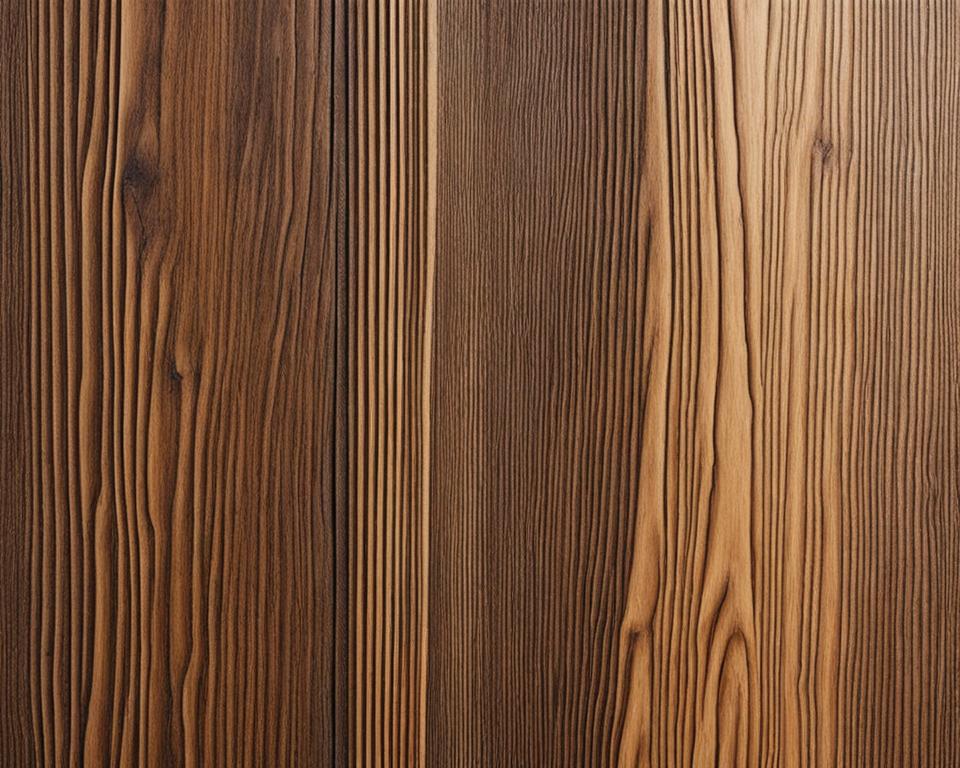When it comes to filling holes, gaps, and imperfections in woodwork, two common options are wood filler and joint compound. Wood filler is a sandable material that can be used to fill nail holes, cracks, and other damage on flat wooden surfaces. On the other hand, joint compound, also known as drywall mud, is typically used for repairs and finishing on drywall surfaces. While both products can be used for similar purposes, there are some key differences between wood filler and joint compound. Wood filler is generally better suited for filling wood surfaces, as it is specifically formulated to adhere to wood and provide a smooth, paintable finish. Joint compound, on the other hand, is designed for use on drywall and may not adhere as well to wood surfaces. Additionally, wood filler is typically more durable and less prone to shrinking than joint compound. It is important to consider the specific needs of your project and choose the product that best suits those needs.
Key Takeaways:
- Wood filler is ideal for filling holes, cracks, and imperfections in wood surfaces.
- Joint compound is primarily used for repairs and finishing on drywall surfaces.
- Wood filler provides a durable and seamless finish.
- Joint compound may not adhere as well to wood surfaces.
- Consider the specific needs of your project when choosing between wood filler and joint compound.
Uses of Wood Filler
Wood filler is a versatile product that can be used for various purposes in woodworking and home improvement projects. Whether you’re working on a small DIY project or tackling a larger woodworking endeavor, wood filler can come in handy for a variety of applications.
Filling Nail Holes
One of the most common uses of wood filler is filling nail holes in wood surfaces. Whether you’re working with furniture, trim, or any other wooden object, wood filler provides a seamless solution for covering up those unsightly holes. By filling the nail holes, you can achieve a smooth surface that’s ready for finishing or painting.
Repairing Cracks
Wood filler is also great for repairing cracks in wood. Whether you have a small crack in your wooden furniture or a larger one on a wooden floor, wood filler can help to prevent further damage and improve the overall appearance of the surface. By filling and repairing the cracks, you can restore the structural integrity of the wood and achieve a more polished look.
Smoothing Imperfections
If you have wooden surfaces with imperfections such as dents or gouges, wood filler can be your go-to solution. It effectively fills in these imperfections, giving you a level and smooth finish. By applying wood filler to the affected areas, you can create a seamless surface that’s ready for painting, staining, or any other desired finish.
Creating Seamless Joints
Wood filler is also handy for creating seamless joints between pieces of wood. Whether you’re working on furniture, cabinets, or any other woodworking project, wood filler helps to fill and conceal the joints, creating a professional-looking finish. It allows you to achieve a clean and seamless appearance, enhancing the overall aesthetic of your work.
Shaping Damaged Areas
Another useful application of wood filler is shaping and filling damaged or uneven areas in woodwork. If you have areas with chips, scratches, or other forms of damage, wood filler can be used to restore the appearance and provide a more polished, finished look. By shaping and filling these damaged areas, you can achieve a more refined and professional result.
With its versatility and numerous applications, wood filler is an essential tool for any woodworking enthusiast or DIYer. By using wood filler, you can tackle nail holes, cracks, imperfections, and more, ensuring a flawless finish for your woodworking projects.
Uses of Joint Compound
In the world of home repairs and renovations, joint compound, also known as drywall mud, is a valuable tool. Its versatile nature and wide range of uses make it a go-to product for professionals and DIY enthusiasts alike. Here are some common uses of joint compound:
Patching Drywall
One of the primary functions of joint compound is patching and repairing drywall surfaces. Whether you have small holes, cracks, or dents, joint compound can effectively fill them in and restore the integrity of your walls.
Finishing Drywall Seams
Drywall seams can be a source of frustration when you’re aiming for a smooth and seamless finish. Joint compound comes to the rescue by creating a flawless surface over these joints, ensuring a professional result. Whether you’re painting or wallpapering, joint compound provides the ideal foundation for your chosen finish.
Texturing Walls
If you’re looking to add visual interest and texture to your walls, joint compound is the perfect material. With different application techniques, such as knockdown, orange peel, or popcorn, you can create unique and eye-catching textures that enhance the overall aesthetic of your space.
Repairing Corners
Corners are prone to damage and wear over time. Whether your drywall corners have experienced cracks or chips, joint compound can effectively repair and restore them to their original condition. This ensures a seamless and professional appearance for your walls.
Skimming Walls
If you have rough or uneven walls that require a smooth surface, joint compound is an excellent solution. By skimming a thin layer of joint compound over the surface, you can achieve a level and polished look, ready for painting or wallpapering.
Joint compound is a versatile product that offers numerous benefits when it comes to drywall repairs, finishing, and texturing. By employing joint compound, you can achieve professional-quality results and transform your living spaces.

Best Uses for Wood Filler
Wood filler is a versatile product that can be used in various situations. Here are some of the best uses for wood filler:
- Furniture repair: Wood filler is perfect for repairing and filling in cracks, gouges, or other imperfections in wooden furniture. It restores both the appearance and structural integrity of your beloved pieces.
- Trim work: When it comes to trim work, such as baseboards or crown molding, wood filler is a go-to solution. It fills nail holes and creates a smooth, finished look, enhancing the overall appearance of your home.
- Woodworking projects: Wood filler is an essential tool for woodworking projects. It allows for seamless repairs and fills joints, cracks, or imperfections, ensuring a flawless finish on your creations.
- Hardwood floor repair: For those unsightly scratches, dents, or gaps in your hardwood floors, wood filler comes to the rescue. It effectively repairs and fills these imperfections, leaving you with a smooth and even surface.
Remember to choose a high-quality wood filler that matches the color and type of wood you’re working with. This ensures a seamless finish that blends perfectly with your project.

Wood filler is a versatile product that can be used in various situations. Some of the best uses for wood filler include:
“Wood filler is perfect for repairing and filling in cracks, gouges, or other imperfections in wooden furniture. It restores both the appearance and structural integrity of your beloved pieces.”
“For those unsightly scratches, dents, or gaps in your hardwood floors, wood filler comes to the rescue. It effectively repairs and fills these imperfections, leaving you with a smooth and even surface.”
Best Uses for Joint Compound
Joint compound, also known as drywall mud, is a versatile product that finds its best uses in drywall repairs and finishing work. Here are some of the top applications for joint compound:
- Drywall repairs: Joint compound is widely used to repair small holes, cracks, or dents in drywall surfaces, providing a seamless and smooth finish.
- Texturing walls: By applying joint compound, you can create textured finishes on walls, enhancing visual interest and adding depth to the surface.
- Skim coating: Skim coating is a technique that involves applying a thin layer of joint compound to even out rough or uneven surfaces, resulting in a smooth and polished finish.
- Finishing drywall seams: Joint compound is applied to drywall seams to create a cohesive and seamless look, preparing the surface for painting or wallpapering.
- Moldings and trim: When it comes to filling in gaps or cracks in moldings and trim, joint compound does an excellent job, providing a professional and seamless appearance.
Joint compound is a versatile and practical choice for various drywall-related projects. Whether you need to repair, texture, skim coat, or finish drywall surfaces, joint compound is an ideal solution.

Expert Tip
“When using joint compound for texturing, experiment with different tools and techniques to achieve the desired effect. Whether you prefer a smooth finish, knockdown texture, or something more intricate, joint compound can help you achieve it.”
Conclusion
In conclusion, when it comes to choosing between wood filler and joint compound for filling holes and gaps, both products have their own advantages and best uses.
Wood filler is specifically designed to adhere to wood surfaces and provide a durable, sandable, and paintable finish. It excels at filling nail holes, cracks, and imperfections in woodwork, making it a great choice for woodworking projects, furniture repairs, and filling nail holes in trim work.
On the other hand, joint compound, also known as drywall mud, is primarily used for repairs and finishing on drywall surfaces. It is commonly used for patching holes, finishing drywall seams, and creating textured or smooth surfaces.
Ultimately, the choice between wood filler and joint compound depends on the specific needs of your project. If you’re working with wood surfaces, such as furniture or trim, and need a seamless and paintable finish, wood filler is the best product for the job. If you’re dealing with drywall repairs or finishing, joint compound is the more suitable option.
Consider the material you are working with, the type of surface you need to fill or repair, and the desired end result. By choosing the right product, you can achieve the best outcome for your project.
FAQ
What is the difference between wood filler and joint compound?
Wood filler is specifically formulated to adhere to wood surfaces and provide a smooth, paintable finish. Joint compound, on the other hand, is designed for use on drywall and may not adhere as well to wood surfaces.
What are the uses of wood filler?
Wood filler can be used for filling nail holes, repairing cracks, smoothing imperfections, creating seamless joints, and shaping damaged areas in woodwork.
What are the uses of joint compound?
Joint compound is commonly used for patching drywall, finishing drywall seams, texturing walls, repairing corners, and skimming walls.
What are some best uses for wood filler?
Wood filler is particularly useful for furniture repair, trim work, woodworking projects, and hardwood floor repair.
What are some best uses for joint compound?
Joint compound is commonly used for drywall repairs, texturing walls, skim coating, finishing drywall seams, and repairing moldings and trim.
